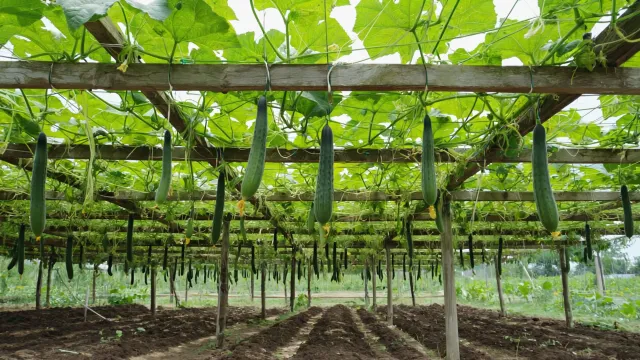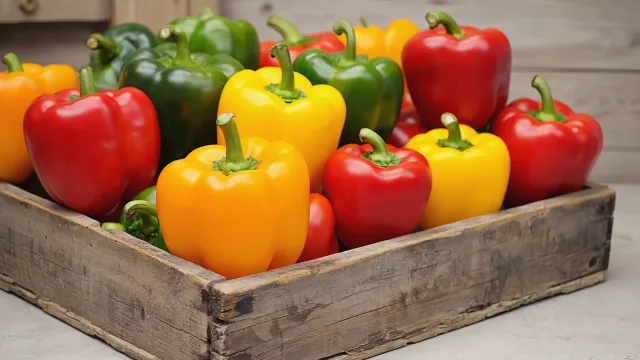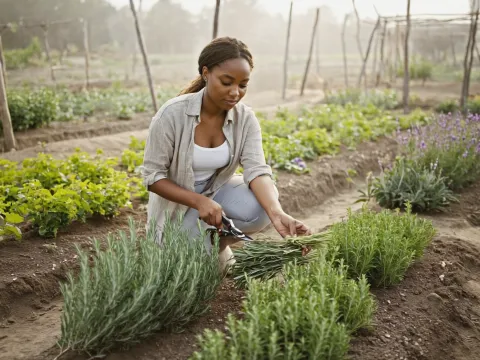Published on May 15, 2025
Last updated: May 15, 2025 · ⏱ 4 min read
Easy Basil Growing Tips for Tiny Spaces

Understanding Basil: A Flavorful Herb for Your Small Space
Basil, with its fragrant aroma and vibrant green leaves, is a delightful herb that can elevate any dish. Whether you’re a seasoned chef or a home cook, having fresh basil at your fingertips can truly enhance your culinary creations. Growing basil in small pots is not only practical but also incredibly rewarding. With a few essential tips and an understanding of the right conditions, you can successfully cultivate this aromatic herb right in your kitchen or on your balcony.
Choosing the Right Basil Variety for Small Pots
When it comes to growing basil in small pots, choosing the right variety is crucial. Compact types such as ‘Spicy Globe’ and ‘Pesto Perpetuo’ are particularly well-suited for container gardening. ‘Spicy Globe’ grows to about 12 inches in height and has a delightful flavor that adds a unique twist to salads and sauces. On the other hand, ‘Pesto Perpetuo’ is a variegated basil that is known for its continuous growth and sweet, aromatic leaves. This variety is ideal for those who want a steady supply of fresh basil without the need for constant replanting.
Selecting the Right Pot for Your Basil
The choice of pot is fundamental to the success of your basil plants. Opt for pots that are at least 6 to 8 inches deep, allowing enough space for the roots to grow. Ensure that the pots have drainage holes to prevent waterlogging, which can lead to root rot. Terra cotta pots are an excellent choice as they provide good aeration and absorb excess moisture. Additionally, consider using self-watering pots to maintain consistent moisture levels, especially if you’re busy or tend to forget about watering.
Soil: The Foundation of Healthy Basil
Basil thrives in well-draining, nutrient-rich soil. A high-quality potting mix, ideally formulated for herbs or vegetables, will provide the necessary nutrients for healthy growth. You can also mix in some compost to enrich the soil further. This will not only improve soil structure but also enhance drainage. Avoid using garden soil since it can compaction and may harbor pests and diseases. A light, airy soil will allow the roots to breathe and absorb water efficiently.
Optimal Light Conditions for Growing Basil
Basil loves sunlight, so placing your pots in a location that receives at least 6 to 8 hours of direct sunlight each day is essential. A south-facing window or a sunny balcony is ideal for growing basil. If natural light is limited, consider using grow lights to supplement the light your plants receive. Position the lights about 6 to 12 inches above the plants and adjust them as the plants grow. Proper lighting is key to producing lush, flavorful basil leaves.
Watering Your Basil: Finding the Right Balance
Watering is a critical component of basil care. While basil likes to stay moist, overwatering can lead to problems such as root rot. The best approach is to water your basil when the top inch of the soil feels dry to the touch. When you water, do so thoroughly until water drains out of the bottom of the pot. This ensures that the roots receive adequate moisture. In hot weather, you may need to water more frequently, while in cooler months, reduce the frequency. Always check the soil moisture before watering.
Fertilizing for Optimal Growth
To keep your basil thriving, you should consider fertilizing your plants every 4 to 6 weeks during the growing season. A balanced, water-soluble fertilizer will work well. Follow the manufacturer's instructions for dilution and application rates. Be cautious not to over-fertilize, as this can lead to lush growth at the expense of flavor. If you notice your basil plants looking pale or weak, it may be time to give them a nutrient boost.
Pruning and Harvesting Your Basil
Regular pruning is essential for maintaining a healthy basil plant. When your basil reaches about 6 inches tall, pinch off the top leaves to encourage bushier growth. This will stimulate the plant to produce more branches and leaves, resulting in a fuller plant. As you harvest, always cut just above a set of leaves to promote new growth. Basil leaves are best harvested in the morning when the oils are most concentrated. Avoid removing more than one-third of the plant at a time to ensure it continues to thrive.
Pest Management in Container Gardens
Pests can be a concern for basil growers, but many common pests can be managed with simple strategies. Aphids, spider mites, and whiteflies are frequent intruders. Regularly inspect your plants for signs of pest activity. If you notice any pests, consider using insecticidal soap or neem oil as a natural treatment. Moreover, maintaining healthy plants through proper care will make them more resilient to pest infestations. Encourage beneficial insects like ladybugs to help control pest populations naturally.
Common Issues When Growing Basil in Small Pots
Even with the best care, you may encounter some challenges while growing basil. One common issue is yellowing leaves, which can indicate overwatering or nutrient deficiencies. If the leaves are wilting, check the soil moisture and adjust your watering schedule accordingly. Additionally, if your basil plants become leggy, it may be a sign that they are not receiving enough light. Move them to a brighter location or supplement with grow lights. Being observant and responsive to your plants’ needs will help you address these issues promptly.
Enjoying the Fruits of Your Labor
Once your basil plants are thriving, it's time to enjoy the rewards. Harvest the leaves regularly by pinching them off just above a pair of leaves to encourage bushier growth. Use the fresh basil in your favorite dishes—think homemade pesto, caprese salads, pasta sauces, or even infused oils. Regular harvesting not only enhances the flavor of your meals but also keeps the plant healthy and productive throughout the season.

Written by Soufyan from GrowToGrub
Soufyan is a gardening educator and founder of GrowToGrub. Through simple guides, easy recipes, and practical life hacks, he helps everyday growers turn small spaces into sustainable, delicious, and chemical-free living.


